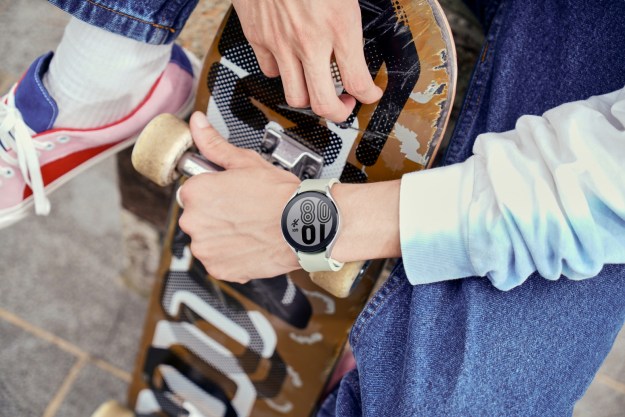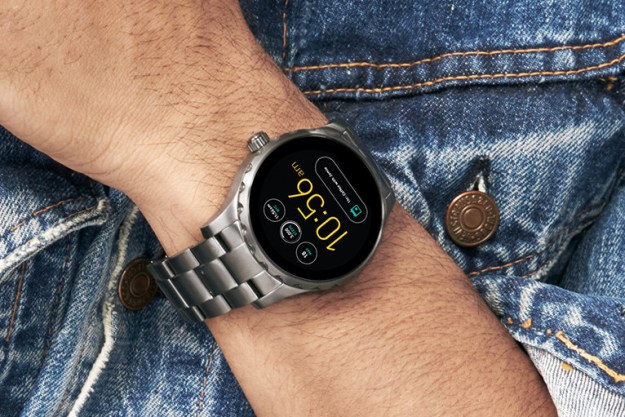The Spine Hinge, modeled on the human spine, is the answer to glasses slipping off your face. It’s so secure, so comfortable, it’ll be welcomed by even the sweatiest of brows.
The hinge is old. Really, really old. In some respects, it’s like the wheel, in that it has been around for ages and fundamentally can’t be drastically altered. It facilitates the swinging movement of two independent items, and always will do. However, the way it does this can be tweaked and improved. That’s what Spine Optics wants to do with the hinge on the arm of your glasses.
Its new invention is called the Spine Hinge, and it was inspired by the spine running down your back. It has five vertebrae which mesh together, each moving just 18 degrees, so each individual piece has the minimum amount of wear. Get up close to a pair and the movement is almost mesmerizing.
Inside the Spine Hinge is a wire cable and dual springs, which pull each arm closed when you take the glasses off. It’s not a sudden movement, or even particularly smooth; but it is effective. Take them off, and they’re ready to put down or back in a case — safely, and without any risk of snapping them off by accident.
Hold on, it’s about to get cool
You’re thinking, wow, that’s not very exciting. You’re right, and it’s not why Spine Optics’ specs are cool. Oh, and yes, they really are cool. The Spine Hinge is designed to gently grip your head, and has been designed for maximum comfort. If you’ve ever worn plastic rim glasses, you’ll know the annoyance of having to push them up your nose every 10 minutes, and knowing that you can’t do anything vaguely sporty in them because they’ll fly off your face in seconds.
The Spine Hinge glasses stay on your face. Once they’re on your face, they’re not going anywhere at all, no matter how much you shake your head. They don’t fall off even if you stare at your feet for hours on end in a very hot room. OK, I didn’t actually do this, but I’m confident it still wouldn’t be enough to get the Spine glasses to slip. Such security makes them very comfortable — reassuringly comfy. Not even metal-framed glasses provide this much stability.
The Spine Hinge has won me over. It solves a problem I’m only too familiar with, in a clever, attractive, and technically impressive way. But I’m not an expert, so I spoke with one. I told my optician, who has 20 years of experience in the industry, about the Spine Hinge. Initially, she scoffed, immediately pointing out they’d be useless for anyone who liked to put their glasses on with one hand — a common trait among those who wear glasses for reading, apparently.

She’s right, you need both hands to open the spring-loaded arms. She also questioned how they would be adjusted for individual needs, noting it wasn’t obvious how something called the “pantoscopic tilt” could be moved around, and that it had been set in a common, neutral way on my test pair. She also believed it was similar to those thin metal frames which are naturally springy.
Comfort wins out
However, while skeptical at first, everything changed when she put them on. “They really are comfortable,” she said. The more we talked about them, the more scenarios came up where they would work. Anyone who wore them all day wouldn’t care about one-handed use, for example, when a high level of comfort was of paramount concern. Just like the style of the frame, the Spine Hinge won’t suit everyone. “These would sell,” she concluded.
The only downside I could personally find is the damn test frames didn’t suit me.
Spine Optics isn’t limiting its hinge to spectacle wearers. It’s also producing a range of sunglasses, where the hinge will be equally beneficial. The first batch of designs consists of eight spectacle frames and four sunglass designs. Spine launched them in the U.S. at the end of January, exclusively through REM Eyewear. The price hasn’t been confirmed, but the total cost will vary depending on your prescription anyway.
Glasses that don’t slip and slide about may not sound like a big deal, but if you wear glasses all the time, it’s a massive benefit. The Spine Hinge solves the problem, and it looks pretty special, as well. The only downside I could find is the damn test frames didn’t look great on me. Otherwise, I’d be wearing them right now. We’re always told we can’t reinvent the wheel, but if Spine Optics’ spectacles are anything to go by, it seems we can reinvent the hinge.
Highs
- Glasses stay where they’re put
- Convenient
- Lessens the chance of frame-breaking accidents
- Looks great
Lows
- One-handed use is impossible
- Concerns over adjustability
- Limited frame choice







